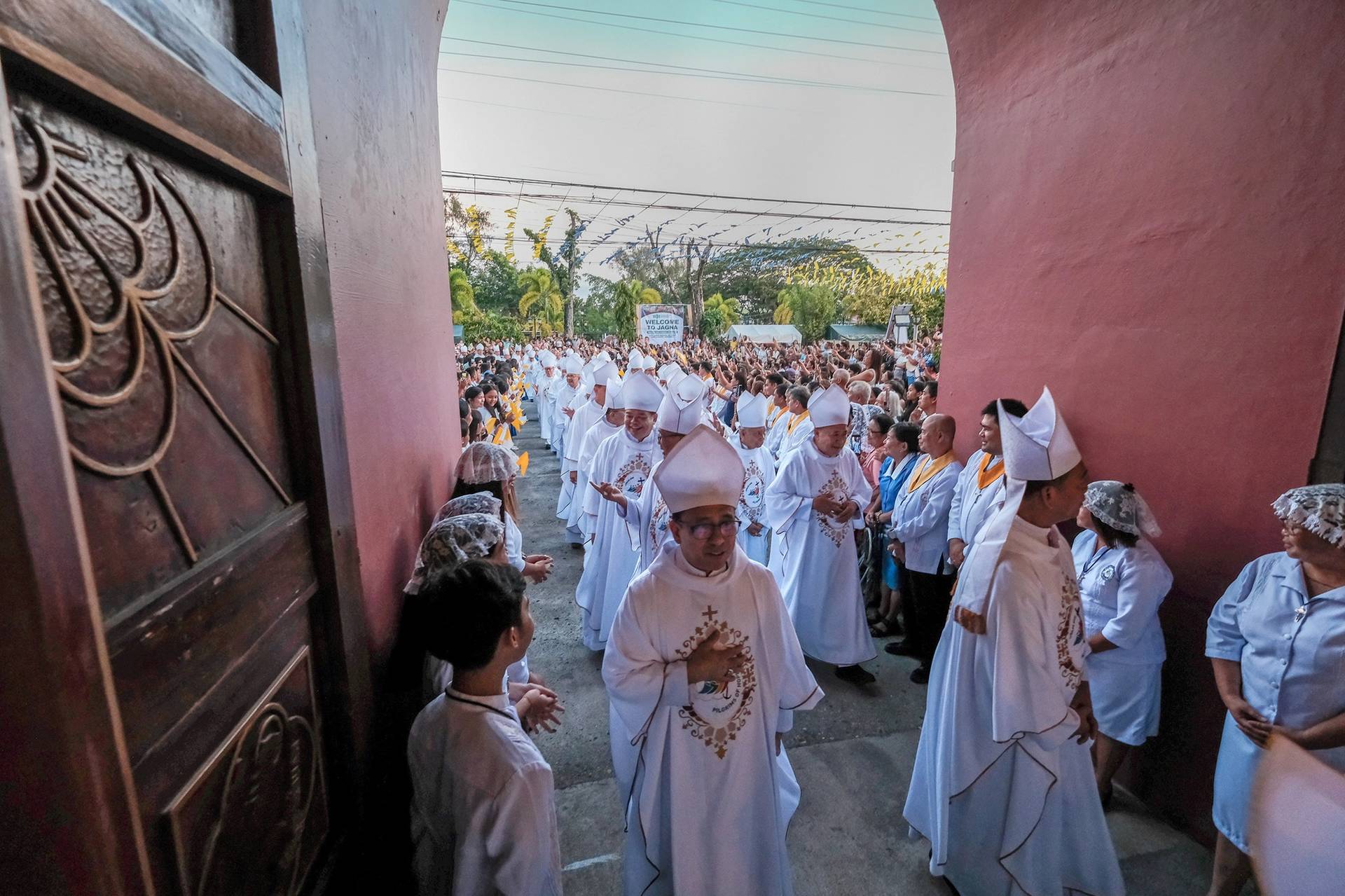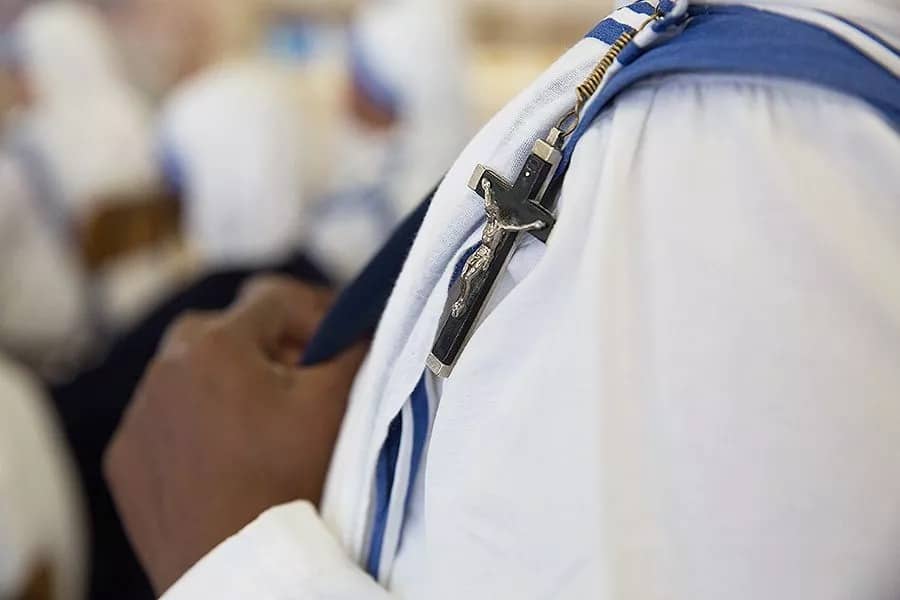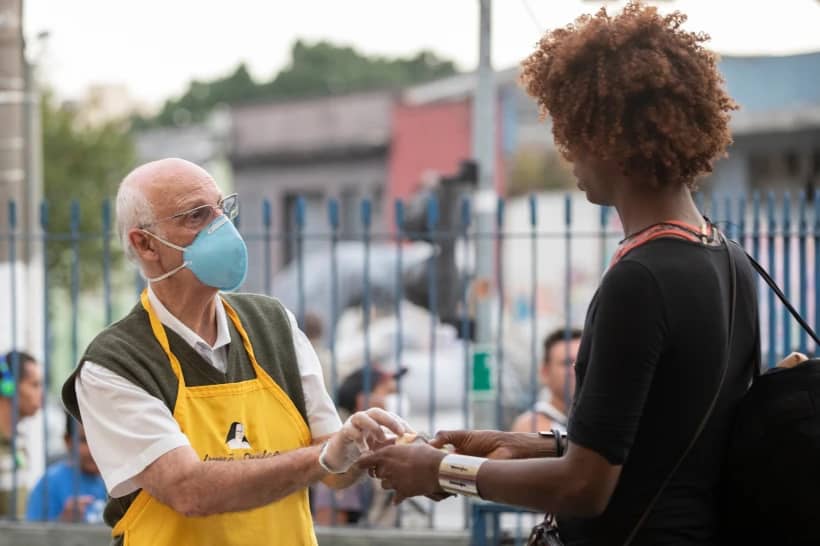Of three high-ranking jobs open to laypeople in Catholic dioceses across the United States — chancellor, chief financial officer, and schools superintendent — only one-third are filled by women.
In fact, 35 percent of US dioceses have no women at all in these influential positions.
On the other hand, given that leadership in the Church has been historically tied to to priestly ordination, that one third of these influential posts are filled by women may seem refreshingly high to some.
Also, this is a country where only 18 percent of the members of Congress are women and only 5 percent are CFOs of Fortune 500 companies.
As the role of women in the Catholic Church continues to be debated, and Pope Francis demands greater opportunities for women, a Crux analysis of data from the country’s 197 dioceses found a decidedly mixed bag: Most dioceses have a woman in a position of real authority, yet a significant number have no women at all.
The three positions were selected as among the most influential in any given diocese by a group of Church management experts – including bishops, priests and nuns, and lay employees – with decades of combined experience working in the Catholic Church.
These three positions tend to report directly to the bishop and often oversee large departments. They almost always have access to, and influence over, the men who call the shots: cardinals, archbishops, and bishops.
There are 571 such positions across the United States, and 32 percent of them are filled by women. Figures are based on the most recent “Official Catholic Directory,” published last June. (Some staffing changes may have occurred since that directory’s publication, and 20 smaller dioceses and eparchies do not have a superintendent of schools.)
Not surprisingly, many of those women are school superintendents. Education is a sector in the Church that embraced women’s leadership well before secular society caught up. Indeed, close to half of Catholic superintendent jobs are held by women.

But when you take superintendents out of the mix, the picture changes: 31 percent of chancellors and only 16 percent of CFOs are women; the percentage of dioceses with no women in the two other important decision-making roles jumps to 56 percent.
To be sure, women hold prominent jobs outside of dioceses: For example, as of June 1, three of the Catholic Church’s largest social service groups in the United States — Catholic Charities, Catholic Relief Services, and the Catholic Health Association — will be led by women (two of them are nuns).
So does the Church still have work to do in the parishes and dioceses of the United States?
Kerry Robinson, the executive director of the National Leadership Roundtable on Church Management and an advocate for women’s leadership in the Church, says yes.
She pointed out that women comprise well over half of the number of active Catholics in the United States, but with men holding most jobs in the dioceses, young women sometimes perceive themselves as being “second class” in the eyes of the Church.
“We risk losing a whole generation of talented, bright, faith-filled, ambitious women,” she said.
Robinson has focused much of her attention on Rome, meeting regularly with heads of Vatican departments to propose ideas on getting women into leadership positions there. “When that happens at the highest level,” she said, “I think we’ll see a more positive effect in churches at the local level.”
Sister Sharon Euart, executive director of the Resource Center for Religious Institutes, said she’s encouraged by the increasing number of women in top spots.
“They’re looking for the best person who can do the job,” she said, “and it may not be a priest, it may not be a religious.”
Euart, who was the first woman to lead the Canon Law Society of America and formerly the associate general secretary of the US Conference of Catholic Bishops, the highest ranking female staffer, said deciding if women should be eligible to fill a role should come down to one question: “Does this position require Holy Orders? And if the answer is no, then the position should be open to anyone,” she said. “In terms of administrative positions, there would not be a large number that require ordination.”

Mary Santi has worked in diocesan leadership for more than two decades, as both the chancellor and director of human resources. She began seeing more women in leadership roles in the 1990s, and has never felt that she was treated differently because of her gender.
“I’ve been fortunate to work with archbishops who are truly collaborative, who invite me to speak my mind even if I’m in disagreement with them,” said Santi, chancellor of the Archdiocese of Seattle.
But some women say that the male-dominated culture of the Church has presented certain challenges among fellow Catholics.
“They’re very good here in terms of listening to me, but I think I would have a little bit more influence if I were a male,” said Joan Loffredo, CFO for the Diocese of Salt Lake City. “I don’t want to sound negative, and I don’t think it’s a realization in their minds, but I think there’s a natural instinct to listen more to the male gender than the female gender.”
Carolyn Woo, who as president and CEO of Catholic Relief Services leads the Church’s largest charity in the United States, agreed that the culture in the Church can be dismissive of women.
“It’s not unusual today, when going to meetings and functions, sometimes people will only acknowledge your male colleagues, and you almost become invisible,” she said.
The Diocese of Shreveport in Louisiana has women in all three positions, and Bishop Michael Duca said having many women on his staff brings several benefits.
First, he said, “they’re just good at what they do,” and some of them remind him that children and family have to be taken into account when scheduling meetings and events.
As a bishop, he said, it’s important to have a variety of voices around the table, because sometimes it’s hard to get a sense of what life is like for lay Catholics.
“I’m sometimes not as connected as I’d like to be with people in the pews,” he said. “When you go in a parish, you’re sometimes treated with a certain level of respect, and people aren’t as open. It’s good to have these voices around the table and you hear more about different experiences.”

Duca recalled meeting with groups of men about financial issues, and that they’d direct their questions to him, rather than his CFO, Jill Braniff. But as soon as Braniff asked the right questions, “the questions I don’t even know how to ask,” as he put it, the men would realize who was actually the one who could help them and their attention shifted.
While 35 percent of US dioceses have no women in these three influential posts, women often contribute in other ways, one archbishop says.
In the Archdiocese of Galveston-Houston, Cardinal Daniel DiNardo said he relies on counsel and insight from women, including the diocesan pastoral council. While the archdiocese didn’t have a woman in a top spot when the 2014 data was published, Julie Vogel was hired as the superintendent of schools later that year.
“I have a number of women on the pastoral council, and I listen carefully to their comments. The men and women are pretty much equal in terms of numbers,” he said. “That’s just what you have to do.”
Even if women are appointed to every top spot, a bishop will always make the final decisions.
But Mary Beth Koenig said good bishops increasingly realize they need to have women advisers, especially when it comes to issues affecting families.
“They see there’s a need for a woman’s perspective on women’s issues,” said Koenig, the CFO for the Diocese of Austin and president of the Diocesan Fiscal Management Conference.
Here’s a closer look at Crux’s analysis:
For the Crux analysis, “top jobs” refer to three different roles: two required by canon law in every diocese — chancellor and chief financial officer — as well as the superintendent of Catholic schools. All three positions, unlike others required by canon law such as vicar general, can be filled by lay people, including women.
The analysis comes on the heels of repeated calls from Pope Francis to include women in decision-making processes inside the Church.
Though Pope Francis has toed the line about women’s ordination (“the Church has spoken and said, ‘No,'” he said), he nonetheless says women should have a place at the table, “wherever we make important decisions.”
He said the Church must “think about the specific place of women also in those places where the authority of the Church is exercised for various areas of the Church.”
How does that vision play out here?
Nuns and laywomen lead many Catholic hospitals, colleges, and agencies, their roles visible as CEOs and presidents. But in dioceses — where bishops and their advisers affect millions of Catholics through budget decisions, the placement of priests, and even the future of parishes — the role of women isn’t as immediately clear.
Each diocese is run by a bishop, an ordained man who in turn relies on a number of advisers and committees to help him govern. Church law requires that he have on staff at least a vicar general, a chancellor, and a chief financial officer, and nearly all American dioceses also have a Catholic school system to administer. The vicar general will always be an ordained man, because in some circumstances, he acts with the authority of the bishop.
However, the chancellor — who in some dioceses functions as a chief of staff, and in others as a records keeper — the CFO, and the superintendent of schools can all be laypeople, including women.
Of the 197 Catholic dioceses in the United States:
- 7 have women in all three top jobs
- 38 have women in two of the three
- 83 have one woman
- 69 do not have women in any of the three positions.
Larger dioceses in terms of Catholic population fare slightly better when it comes to including women in top jobs than smaller ones.
Of the 20 largest dioceses in terms of Catholic population:
- 1 diocese has women in all three spots
- 4 have women in two positions
- 10 have one woman
- 5 have none
In the 20 smallest dioceses*:
- 2 have women in all three spots
- 2 have women in two positions
- 6 have one woman
- 10 – half of them — have no women in a top job
* “Smallest dioceses” excludes those dioceses without a superintendent of schools, comprised mostly of Eastern Rite churches.
Christina Reinwald contributed to the research and graphics of this article.















